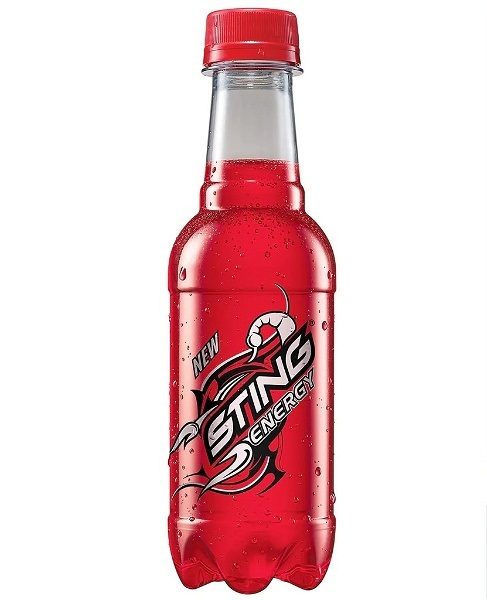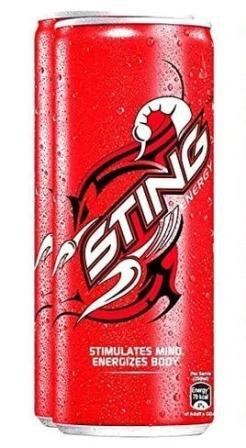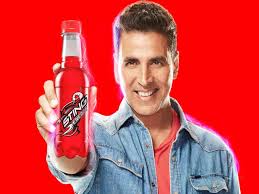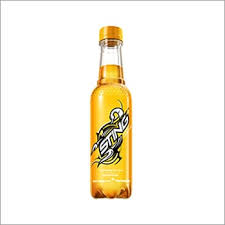Sting Energy Drink Nutritional Information: Sting Energy Drink (or Sting) company from PepsiCo International. Sting drink is an energy drink with an awesome refreshing taste and delicious flavour. Sting drink refreshes you and gives you an energy boost and also charges up to stay full of energy. Sting drink contains Caffeine, Ginseng, and Vitamin B with delicious flavour. It energizes the body. Read the full article to know more about Sting Energy Drink Nutritional Information in detail.
Sting Energy Drink Nutritional Information
The Sting energy drink nutritional information per 200 ml is given below.
| Carbohydrate | 30.6 (g) |
| Energy | 120 kcal |
| Protein | 0 (mg/L) |
| Fat | 0 (mg) |
| Vitamin B3 | 3.4 (mg) |
| Vitamin B6 | 0.4 (mg) |
| Saturated Fat | 0 (mg) |
| Sugar | 30.4 (g) |
| Sodium | 83.4 (mg) |

Sting Energy Drink Nutritional Information in Details
Sting Energy Drink Nutritional Information: Carbohydrate
Carbohydrates with the empirical formula Cm(H2O)n (wherein m may additionally or won`t be certainly considered one among a type from n), which does now no longer endorse the H has covalent bonds with O (for instance with CH2O, H has a covalent bond with C but now no longer with O).
However, now no longer do all carbohydrates follow this unique stoichiometric definition (e.g., uronic acids, deoxy-sugars which consist of fucose), nor are all chemical materials that do follow this definition automatically categorized as carbohydrates (e.g. formaldehyde and acetic acid). The term is no longer an unusual place in biochemistry, wherein it’s far a synonym of saccharide, a hard and fast that includes sugars, starch, and cellulose.
Monosaccharides and disaccharides, the smallest (lower molecular weight) carbohydrates, are commonly called sugars. While the medical nomenclature of carbohydrates is complex, the names of the monosaccharides and disaccharides very often surrender withinside the suffix -ose, which has become first off taken from the word glucose and is used for almost all sugars.
Sting Energy Drink Nutritional Information: Energy
Energy is a conserved quantity – the law of conservation of energy states that energy can be changed into form, but not created or destroyed.
Common forms of energy are the kinetic energy of a moving object, potential energy stored by an object (for example due to its location in a field), elastic energy stored in a fixed object, chemical energy associated with chemical reactions, radiant energy, and energy carried. by electromagnetic radiation, and internal energy of a thermodynamic system.
Due to mass-energy equivalence, any object that has mass at rest (called rest mass) has an equivalent amount of energy, in a form called rest energy, plus any additional energy (in any form) that the object acquires. above resting energy. increases the total mass of an object just as it increases its total energy. Human civilization needs energy to function, which it receives from energy sources such as fossil fuels, nuclear fuel, or renewable energy.
The climate and ecosystem processes of the Earth are driven by the energy that the planet receives from the Sun (although a small part is also geothermal energy). Kinetic energy is determined by the motion of an object, or the compound motion of its components, while potential energy reflects the likelihood of an object to move, and is generally a function of the object’s position in the field, or its own if in the field. may be saved.
Although these two categories are sufficient to describe all forms of energy, it is often useful to designate specific combinations of potential and kinetic energies as separate forms. For example, the sum of translational and rotational kinetic energies and potential energies in a system is called mechanical energy, while nuclear energy refers, among other things, to the binding potentials within atomic nuclei arising from nuclear or weak forces.

Sting Energy Drink Nutritional Information: Protein
Proteins are gigantic biomolecules and macromolecules that contain something like one long chain of amino destructive developments. Catalyzing metabolic reactions, replicating DNA, responding to stimuli, giving cells and organisms structure, and transporting molecules are just a few of the many roles that proteins play within organisms.
Proteins contrast from each other basically in their grouping of amino acids, which is directed by the nucleotide succession of their qualities, and which normally brings about protein collapsing into a particular 3D design that decides its action. A straight chain of amino corrosive deposits is known as a polypeptide. At least one long polypeptide is found in a protein. Short polypeptides, containing under 20-30 deposits, are seldom viewed as proteins and are generally called peptides.
Peptide bonds and adjacent amino acid residues bind the individual amino acid residues together. The succession of amino corrosive deposits in a protein is characterized by the grouping of a quality, which is encoded in the hereditary code. As a rule, the hereditary code indicates 20 standard amino acids; be that as it may, in specific life forms the hereditary code can incorporate selenocysteine and — in certain archaea – pyrrolysine.
Read Also: Sting Energy Drink Ingredients in Details
Soon after or in any event, during the union, the buildups in a protein are much of the time synthetically changed by post-translational change, which modifies the physical and compound properties, collapsing, security, action, and at last, the capability of the proteins. A few proteins have non-peptide bunches connected, which can be called prosthetic gatherings or cofactors. Proteins can likewise cooperate to accomplish a specific capability, and they frequently partner to frame stable protein buildings.
Proteins only exist for a short time after they are made, and the machinery of the cell uses the process of protein turnover to break them down and recycle them. The half-life of a protein is used to measure its lifespan, which ranges widely. In mammalian cells, they can live for minutes or years, with an average lifespan of one to two days. Proteins that are abnormal or misfolded degrade more quickly because they are unstable or because they are targeted for destruction.
Proteins, like other natural macromolecules like polysaccharides and nucleic acids, are fundamental components of living things and participate in nearly every cell cycle. Numerous proteins are compounds that catalyze biochemical responses and are essential to digestion. Proteins likewise have primary or mechanical capabilities, for example, actin and myosin in muscle and the proteins in the cytoskeleton, which structure a process for the framework that keeps up with cell shape.
Different proteins are significant in cell flagging, resistant reactions, cell grip, and the cell cycle. In creatures, proteins are required in the eating routine to give the fundamental amino acids that can’t be blended. Processing separates the proteins for metabolic use. Proteins might be decontaminated from other cell parts utilizing different strategies like ultracentrifugation, precipitation, electrophoresis, and chromatography; the coming of hereditary designing has made conceivable various techniques to work with cleansing.
Immunohistochemistry, site-directed mutagenesis, X-ray crystallography, nuclear magnetic resonance, and mass spectrometry are all common approaches to examining protein structure and function.
Sting Energy Drink Nutritional Information: Fat
In nourishment, science, and science, fat typically implies any ester of unsaturated fats, or a combination of such mixtures, most regularly those that happen in living creatures or in food.
The term frequently alludes explicitly to fatty oils (triple esters of glycerol), which are the principal parts of vegetable oils and of greasy tissue in creatures; or on the other hand, significantly more barely, to fatty substances that are strong or semisolid at room temperature, accordingly barring oils.
The term may likewise be utilized all the more extensively as an equivalent word of lipid – any substance of natural pertinence, made out of carbon, hydrogen, or oxygen. In this sense, other than the fatty substances, the term would incorporate a few different kinds of mixtures like mono-and diglycerides, phospholipids (like lecithin), sterols (like cholesterol), waxes (like beeswax), and free unsaturated fats, which are normally present in human eating routine in more modest sums.
Fats are one of the three principal macronutrient bunches in the human eating routine, alongside carbs and proteins, and the fundamental parts of normal food items like milk, spread, fat, grease, salt pork, and cooking oils. They play important structural and metabolic roles in the majority of living things, including energy storage, waterproofing, and thermal insulation, and are a significant and dense source of food energy for many animals.
The human body can create the fat it expects from other food fixings, with the exception of a couple of fundamental unsaturated fats that should be remembered for the eating regimen. Dietary fats are additionally the transporters of a few flavor and fragrance fixings and nutrients that are not water-dissolvable. In people and numerous creatures, fats serve both as energy sources and as stores for energy in an abundance of what the body needs right away. When fat is burned or metabolized, it produces approximately 9 food calories (37 kJ = 8.8 kcal).
Fats are likewise wellsprings of fundamental unsaturated fats, a significant dietary necessity. Vitamins A, D, E, and K can only be digested, absorbed, and transported in conjunction with fats because they are fat-soluble. Fats assume an essential part in keeping up with sound skin and hair, protecting body organs against shock, keeping up with internal heat levels, and advancing solid cell capability. Additionally, fat protects against a variety of illnesses.
At the point when a specific substance, whether compound or biotic, arrives at risky levels in the circulatory system, the body can successfully weaken – or possibly keep up with a balance of – the culpable substances by putting away it in new fat tissue. This assists with safeguarding fundamental organs, until such time as the culpable substances can be used or eliminated from the body by such means as discharge, pee, coincidental or purposeful phlebotomy, sebum discharge, and hair development.

Sting Energy Drink Nutritional Information: Vitamin B3
Vitamin B3, casually alluded to as niacin, is a nutrient family that incorporates three structures, or vitamers: niacin (nicotinic corrosive), nicotinamide (niacinamide), and nicotinamide riboside. Each of the three types of vitamin B3 is switched inside the body over completely to nicotinamide adenine dinucleotide (NAD). NAD is expected for human existence and individuals can’t make it inside their bodies without either vitamin B3 or tryptophan. In 2004, it was discovered that nicotinamide riboside was a type of vitamin B3.
Extreme lack of vitamin B3 in the eating regimen causes the sickness pellagra, portrayed by the runs, sun-delicate dermatitis including hyperpigmentation and thickening of the skin (see picture), aggravation of the mouth and tongue, daze, dementia, and whenever left untreated, demise. Irritability, poor concentration, anxiety, fatigue, memory loss, restlessness, apathy, and depression are all typical psychiatric symptoms. The biochemical instruments for the noticed lack caused neurodegeneration are not surely known.
(a) The necessity for nicotinamide adenine dinucleotide (NAD+) to smother the making of neurotoxic tryptophan metabolites.
(b) Cell damage as a result of mitochondrial ATP generation inhibition.
(b) Enactment of the poly (ADP-ribose) polymerase (PARP) pathway, as PARP is an atomic protein engaged with DNA fix, yet without a trace of NAD+ can prompt cell passing.
(d) Decreased levels of either the neuroprotective brain-derived neurotrophic factor or its receptor, tropomyosin receptor kinase B; or on the other hand.
(e) Changes to genome articulation straightforwardly because of the niacin inadequacy.
Sting Energy Drink Nutritional Information: Vitamin B6
Vitamin B6 is a water-solvent nutrient, one of the B nutrients. The nutrient really includes a gathering of six synthetically related compounds, i.e., vitamers, that all contain a pyridine ring as their center. Pyridoxal 5′- phosphate has the most elevated organic movement, yet the others are convertible to that structure. Vitamin B6 fills in as a co-calculate in excess of 140 cell responses, generally connected with amino corrosive biosynthesis and catabolism, but at the same time is engaged with unsaturated fat biosynthesis and other physiological capabilities.
In light of its compound soundness, pyridoxine hydrochloride is the structure generally regularly given as vitamin B6 dietary enhancement. The enzyme pyridoxal kinase converts absorbed pyridoxine (PN) to pyridoxamine 5′-phosphate (PMP), and the enzymes pyridoxamine-phosphate transaminase or pyridoxine 5′-phosphate oxidase, which also catalyzes the conversion of pyridoxine 5′-phosphate (PNP) to PLP, convert PMP to the metabolically active form For corruption, in a non-reversible response, PLP is catabolized to 4-pyridoxic corrosive, which is discharged in pee.
Antagonistic impacts have been recorded from vitamin B6 dietary enhancements, yet never from food sources. Despite the fact that it is a water-solvent nutrient and is discharged in the pee, dosages of pyridoxine in the abundance of the dietary maximum breaking point (UL) over extensive stretches cause difficult and at last irreversible neurological issues.
The numbness and pain in the limbs are the primary signs. In serious cases, engine neuropathy might happen with “easing back of engine conduction speeds, delayed F wave latencies, and delayed tactile latencies in both lower limits”, causing trouble in strolling. Pyridoxine intakes greater than 200 milligrams per day are not considered safe because of the risk of developing sensory neuropathy at doses greater than 1,000 milligrams per day. However, adverse effects can occur at much lower doses.
A “No-observed-adverse-effect level,” or the highest dose at which no adverse effects were observed, was established in trials with doses below 200 mg/day. This was partitioned by two to consider individuals who may be additional delicate to the nutrient, alluded to as a “vulnerability factor”, coming about in the previously mentioned grown-up UL of 100 mg/day.

Sting Energy Drink Nutritional Information: Saturated Fat
A type of fat known as saturated fat has only one bond in its fatty acid chains. A fat known as a glyceride is made of two sorts of more modest particles: fatty acids, which each have a long, linear, or branched chain of carbon (C) atoms, and a short backbone of glycerol. Along the chain, some carbon molecules are connected by single bonds (- C-), and others are connected by twofold bonds (- C=C-).
A pair of hydrogen atoms can react with a double bond along the carbon chain to form a single -C-C- bond, securing each H atom to one of the two C atoms. Glyceride fats with next to no carbon chain twofold securities are called immersed on the grounds that they are “soaked with” hydrogen iotas, having no twofold bonds accessible to respond with more hydrogen.
Most creature fats are soaked. The majority of fish and plant-based fats are unsaturated. The amount of saturated and unsaturated fat in various foods varies. Saturated fats are abundant in many processed foods, including sausage and foods deep-fried in hydrogenated oil. Baked goods from the store, particularly those with partially hydrogenated oils, are also affected.
Different instances of food varieties containing a high extent of soaked fat and dietary cholesterol incorporate creature fat items, for example, grease or schmaltz, greasy meats, and dairy items made with entire or diminished fat milk like yogurt, frozen yogurt, cheddar, and margarine. Saturated fats are found in a lot of vegetable products, like palm kernel oil and coconut oil. Rules delivered by numerous clinical associations, including the World Wellbeing Association, have pushed for a decrease in the admission of soaked fat to advance the well-being and lessen the gamble of cardiovascular illnesses.
Sting Energy Drink Nutritional Information: Sugar
Sugar is the term used to describe sweet-tasting, soluble carbohydrates that are widely used in food. This category includes monosaccharides, or simple sugars, such as glucose, fructose, and galactose. Compound sugars, also known as disaccharides or double sugars, are composed of two bonded monosaccharides.
Some common examples of these include sucrose (glucose + fructose), lactose (glucose + galactose), and maltose (two glucose molecules). Refined white sugar is a form of sucrose. When consumed, compound sugars are broken down into simpler sugars through the process of hydrolysis within the body. Sucrose is a common ingredient found in prepared foods such as cookies and cakes.
It is often added to commercially available processed food and beverages, and people also use it as a sweetener for foods like toast and cereal, as well as beverages like coffee and tea. On average, a person consumes approximately 24 kilograms (53 pounds) of sugar per year. However, individuals in North and South America consume up to 50 kg (110 lb) while those in Africa consume less than 20 kg (44 lb).

Sting Energy Drink Nutritional Information: Sodium
The chemical element sodium has the atomic number 11 and the symbol Na (from the Latin Natrium). It is a light, silvery-white metal with a high degree of reactivity. Since it belongs to group 1 of the periodic table, sodium is an alkali metal. It’s just a steady isotope is 23Na. The free metal must be made from compounds because it does not exist in nature.
Sodium (NaCl) can be found in many minerals, including feldspars, sodalite, and halite, making it the sixth most abundant element in the Earth’s crust. Many salts of sodium are profoundly water-dissolvable: sodium particles have been filtered by the activity of water from the World’s minerals over ages, and in this way, sodium and chlorine are the most well-known disintegrated components by weight in the seas.
Sodium was first disengaged by Humphry Davy in 1807 by the electrolysis of sodium hydroxide. There are a lot of other useful sodium compounds, including sodium hydroxide (lye), which is used to make soap, and sodium chloride (edible salt), which is used as a de-icer and nutrient for animals and humans.
Sodium is a fundamental component for all creatures and a few plants. Sodium particles are the significant cation in the extracellular liquid (ECF) and as such are the significant supporter of the ECF osmotic strain and ECF compartment volume.[citation needed] Loss of water from the ECF compartment builds the sodium focus, a condition called hypernatremia.
Isotonic loss of water and sodium from the ECF compartment diminishes the size of that compartment in a condition called ECF hypovolemia. Through the sodium-potassium siphon, living human cells siphon three sodium particles out of the cell in return for two potassium particles siphoned in; When ion concentrations are compared inside to the outside of the cell membrane, potassium is about 40:1 and sodium is about 1:10.
When the electrical charge in a nerve cell is lost, the nerve impulse—an action potential—can be transmitted across the cell membrane. sodium assumes a critical part in that action.
Pingback: Sting Drink Caffeine Content 250ml - Stingdrink.com